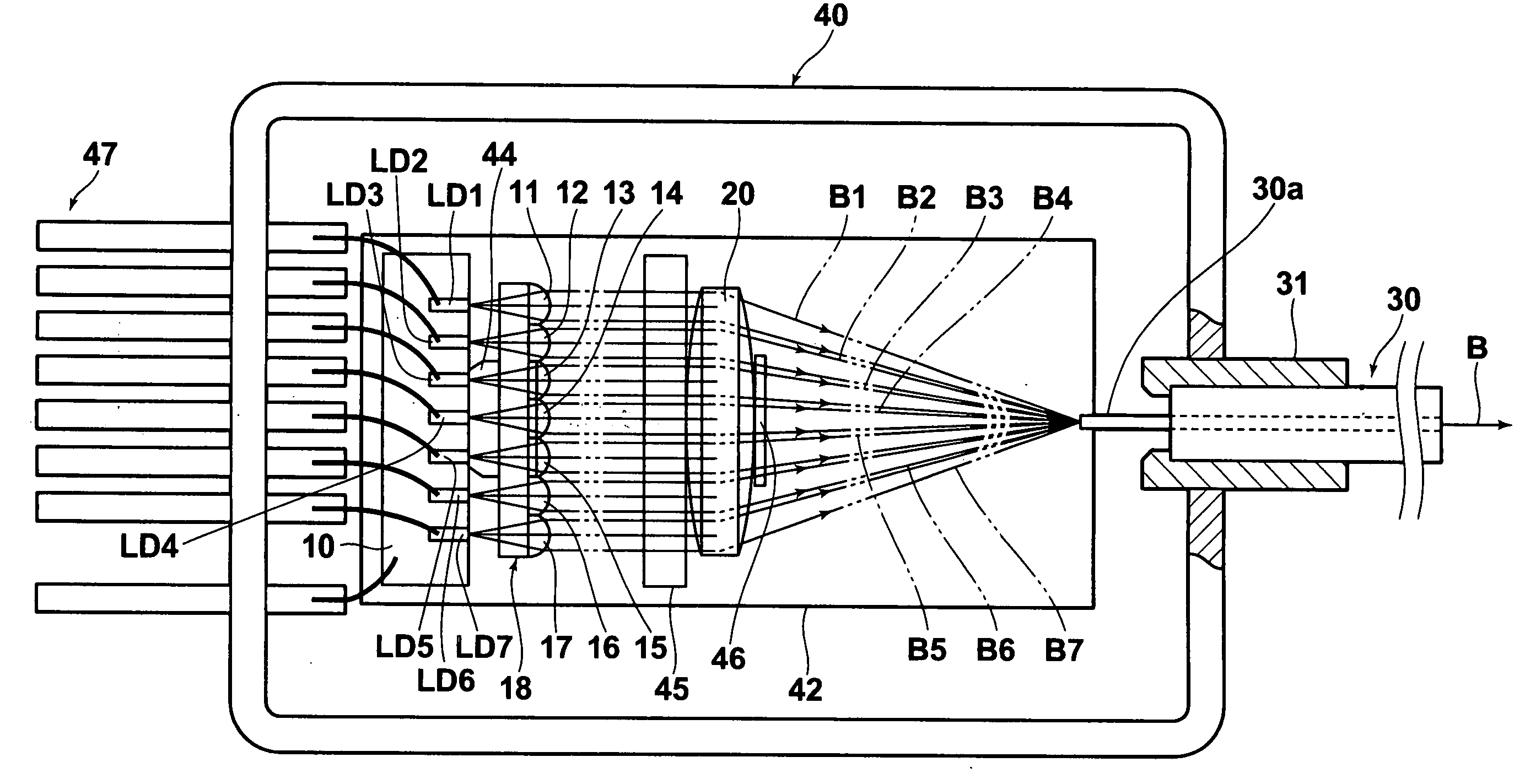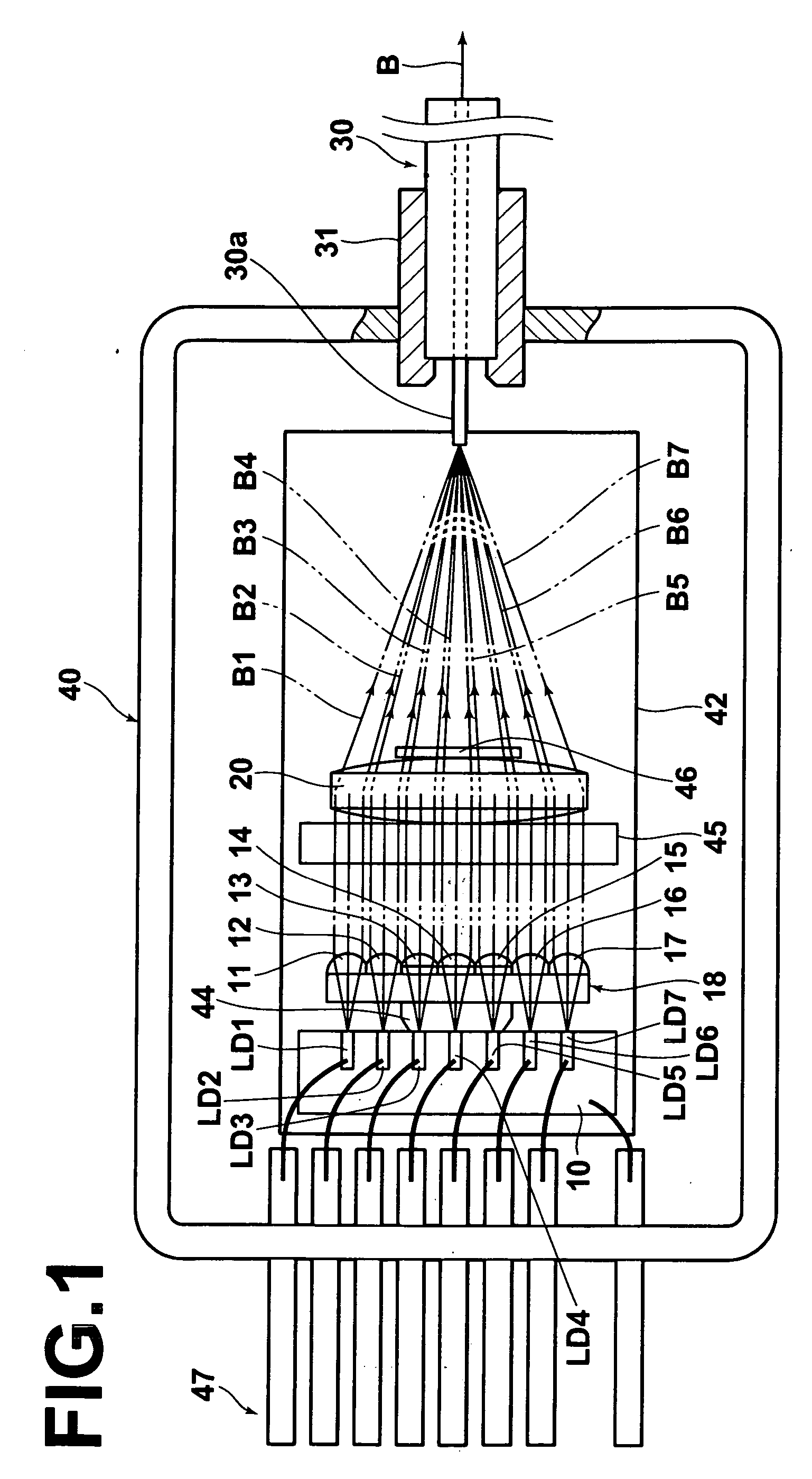Lens holder and laser array unit using the same
a laser array unit and lens holder technology, applied in the field of lens holder and laser array unit using the same, can solve the problems of high positional difficulty, inability to secure the high bonding strength between the lens holder and the heat block, and the surface of the holder with the heat block inevitably becoming long, so as to achieve high face alignment accuracy, and high bonding strength. the effect of strain
- Summary
- Abstract
- Description
- Claims
- Application Information
AI Technical Summary
Benefits of technology
Problems solved by technology
Method used
Image
Examples
first embodiment
[0066]FIGS. 1, 2, and 3 are a plan view, a side view, and a partial front view respectively of the UV high luminance beam combining laser unit according to the present invention. As shown in the drawings, the beam combining unit includes, for example, 7 chip state transverse multimode GaN semiconductor lasers LD1, LD2, LD3, LD4, LD5, LD6, and LD7 fixedly disposed on a heat block 10 having a high thermal conductivity; a collimating lens array 18 constituted by integrally formed collimating lenses 11, 12, 13, 14, 15, 16, and 17, each corresponding to each of the lasers LD1, LD2, LD3, LD4, LD5, LD6, and LD7; a single condenser lens 20; and a single multimode optical fiber 30.
[0067] The GaN semiconductor lasers LD1 to LD7 oscillate at wavelengths in the range of 400 nm to 410 nm with an output power of around 200 mW. These GaN semiconductor lasers LD1 to LD7 constitute a laser array having 7 luminous points. In the present embodiment, single mode lasers are used as the GaN semiconductor...
second embodiment
[0117] In the second embodiment, a collimating lens holder 144 with the collimating lens array 18 fixedly bonded on the upper surface 144c thereof is fixedly bonded on the base plate 42 serving as the reference member directly instead of the heat block 10.
[0118] In the present embodiment, the collimating lens holder 144 is also formed such that the length of the upper surface 144c for bonding the collimating lens array 18 in the direction orthogonal to the optical axis direction of the lens (in the left-right direction in the drawing) is longer than the length of the lower surface 144d to be bonded to the base plate 42 in the same direction as shown in FIG. 9. Thus, the former length may be set long enough to improve the face alignment accuracy with the collimating lens array 18. On the other hand, the latter length may be set appropriately short within a range which ensures the bonding strength to minimize the strain that may occur at the bonded section with the base plate 42 due t...
PUM
 Login to View More
Login to View More Abstract
Description
Claims
Application Information
 Login to View More
Login to View More - R&D
- Intellectual Property
- Life Sciences
- Materials
- Tech Scout
- Unparalleled Data Quality
- Higher Quality Content
- 60% Fewer Hallucinations
Browse by: Latest US Patents, China's latest patents, Technical Efficacy Thesaurus, Application Domain, Technology Topic, Popular Technical Reports.
© 2025 PatSnap. All rights reserved.Legal|Privacy policy|Modern Slavery Act Transparency Statement|Sitemap|About US| Contact US: help@patsnap.com



